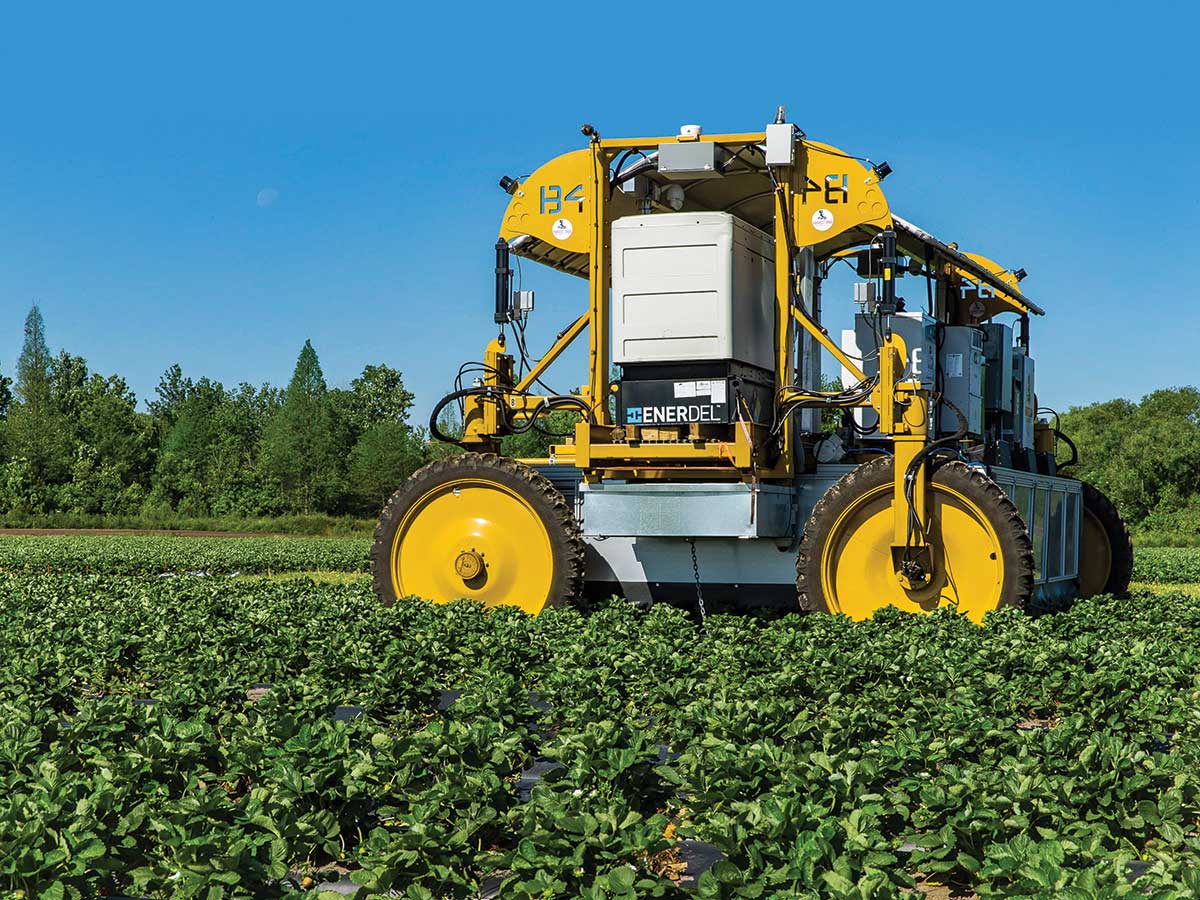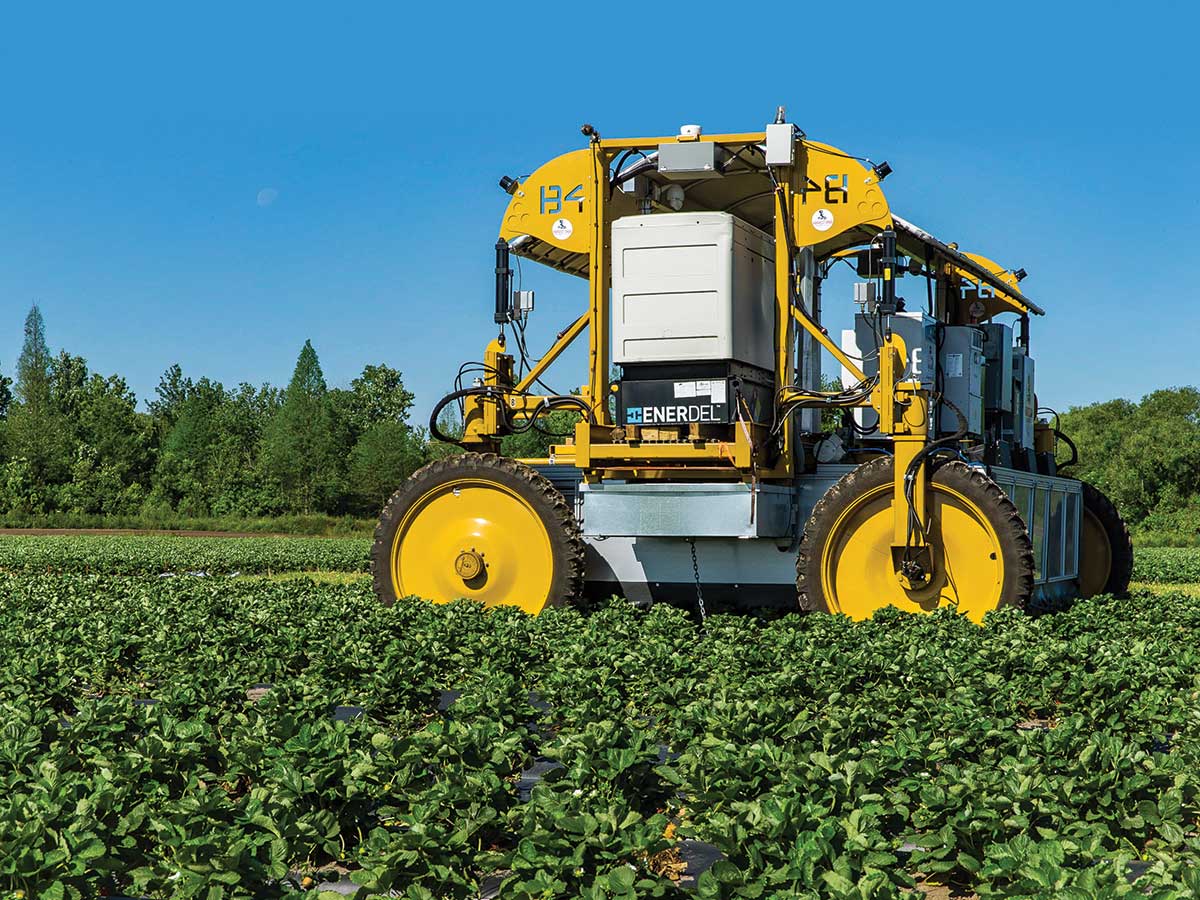
Why robots are the farmers of the future
 A Harvest CROO robot in action (Harvest CROO Robotics)
A Harvest CROO robot in action (Harvest CROO Robotics)
On a dairy farm in Iceland, a laser-guided robot attaches milking cups to a cow’s udder. In Florida and California, robotic harvesters move slowly as their spidery arms carefully pluck strawberries from the rows of plants below. And in Saskatchewan, an autonomous seeder drives itself up and down the fields injecting barley seeds into the ground.
Robots are the future of agriculture. A 2018 report from IDTechEx, a U.K.-based market research firm, declares “ultra-precision farming and autonomous farming” will revolutionize the industry. It predicts the market for agricultural robots and drones will be worth US$35 billion by 2038.
Population growth is part of what’s driving robotic innovation, says Biren Agnihotri, Canadian intelligent automation leader for EY Canada, and a partner in the firm’s advisory practice. “By 2050 the world’s population will increase to an estimated 9.6 billion people and that will translate into 70 per cent more food than is required today,” Agnihotri says.
According to statistics from EY, a farmer in 1960 was responsible for feeding 26 people, while today a farmer feeds 155. By 2050, that number is expected to jump to 265. That growth is sparking a digital agricultural revolution and, as a hub of artificial intelligence development, Canada is well-positioned to be a leader.
In Saskatchewan, development and testing is already under way for an autonomous power platform called Dot. The U-shaped self-driving vehicle is designed to have implements attached to it—a seeder, sprayer or harvester cart—so that it becomes whatever the farmer needs it to be.
The all-purpose machine sells for US$260,000. Given that a single top-of-the-line combine can cost up to US$600,000, it would seem a bargain. It’s even cheaper than a lot of tractors, in part because, as a company spokesperson puts it, “Dot removes the need for AC, comfortable seating and all other amenities that are built for the comfort of the farmer.”
“Finding labour is a major issue in farming, and the limited supply combined with increasing demand results in higher wages for good-quality labour, which can drive up costs,” says Stuart Person, a CPA and national director of primary producers, agriculture, at the consultancy MNP in Edmonton. Agricultural robotics will allow farms to operate with fewer staff, particularly seasonal labourers.
Robotics might also address a coming retirement crisis. Agnihotri calculates that, as of 2016, 54 per cent of the rural workforce was 55 years or older and will be leaving the industry in the next decade. “They will take with them decades of insight and economic expertise,” Agnihotri says. “These trends will make it inevitable for us to adopt different mechanisms to fulfill that demand and supply gap.”
Driscoll’s has a berry picker and packer machine nicknamed Harv that can do the work of 30 humans
In the meantime, human farmers still in the field are grappling with agriculture’s new direction. “The reaction is quite unique,” says Leah Olson-Friesen, CEO of Dot Technology. “They get excited about it or they get nervous. It’s very, very difficult for those who have been in the industry to consider what their farms would be like without a tractor.
“When we see the Dot units in the field, it’s a little bit of shock and excitement. But from the perspective of a farmer, the wheels start quickly turning,” says Olson-Friesen. “He or she suddenly starts to think, ‘I wouldn’t have to be in the cab. I could be doing other things.’ ”
Down in California, the berry producer Driscoll’s is investing in robotic technologies to address the labour shortages it’s already facing. One of them, developed by Harvest CROO Robotics, is a berry picker and packer machine that can do the work of 30 humans. Nicknamed Harv, it has multiple robotic arms—there’s an arm to lift leaves off the berries, another that inspects the fruit and feeds data back to its AI brain about maturation, and a final multi-tooled arm that picks and packs ripe berries.
Then there’s GUSS, from a company called Global Unmanned Spray System, based in Fresno, California. The self-driving sprayer is made especially for orchards. Because GPS hasn’t worked well in covered spaces, such as the rows under tree canopies, the low-set aerodynamic tank on wheels is guided by sensors and software, and can autonomously move up and down the rows of an orchard spraying citrus, pistachio, almond, walnut and stone fruit trees with pesticides. One operator in a control van can monitor up to 10 GUSS sprayers at a time.
Technology can even tell farmers how contented their cows are. Robotic machines may have already mastered milking, but now the Irish company Cainthus is testing AI-based technology that performs facial recognition on individual cows, collecting 864,000 data points per animal per day. Using surveillance cameras and predictive imaging to monitor feeding and bovine health, Cainthus has partnered with food-and-agriculture giant Cargill to scale this technology on dairy farms; it’s being installed on a handful of farms in Canada. The data gathered by the cameras allow farmers with big herds to know as much about their animals as the steward of a small herd would—when they’re ill, when they’re in labour, whether their output is up to snuff. And unlike humans, cows can’t complain about being watched.